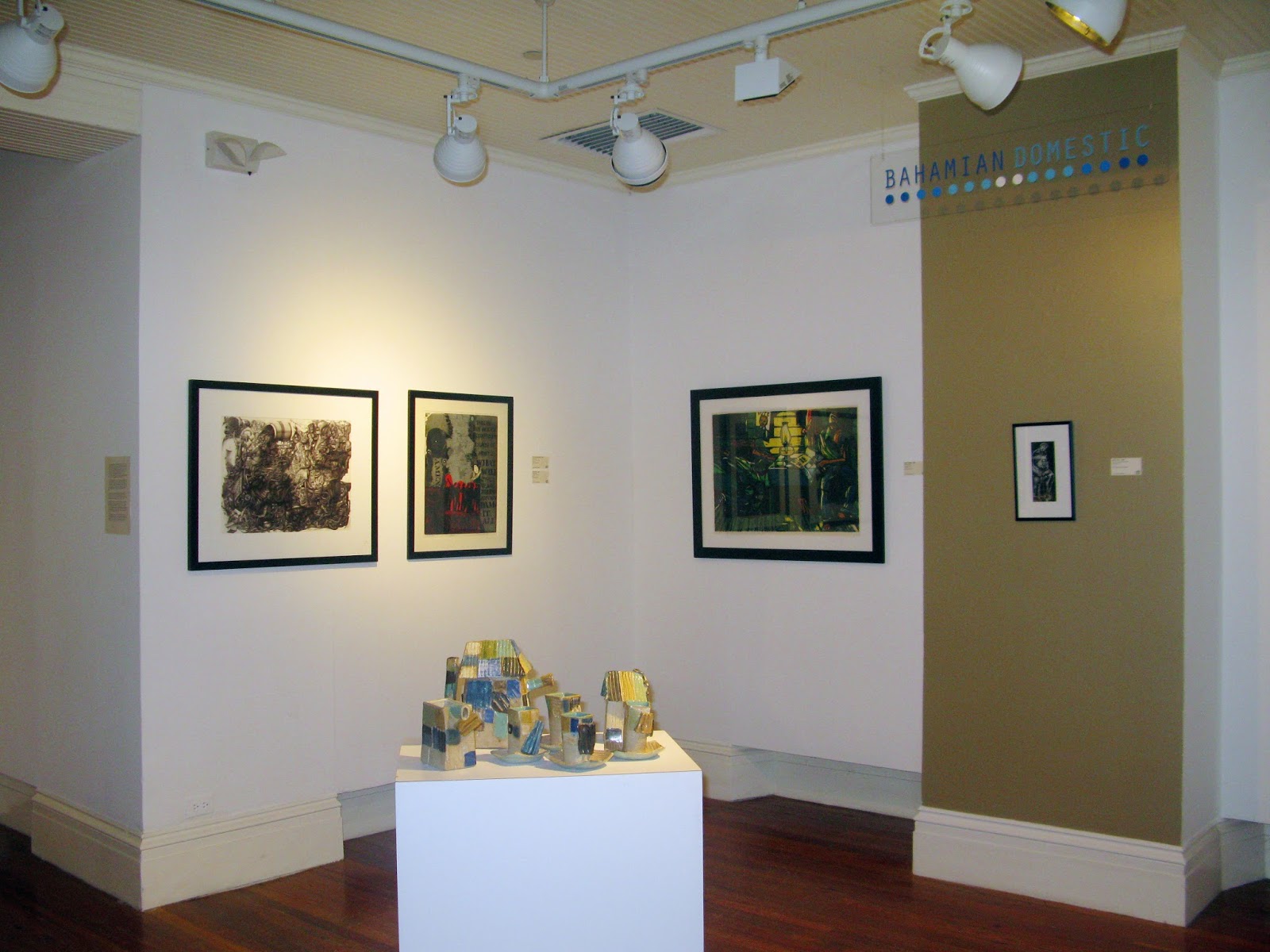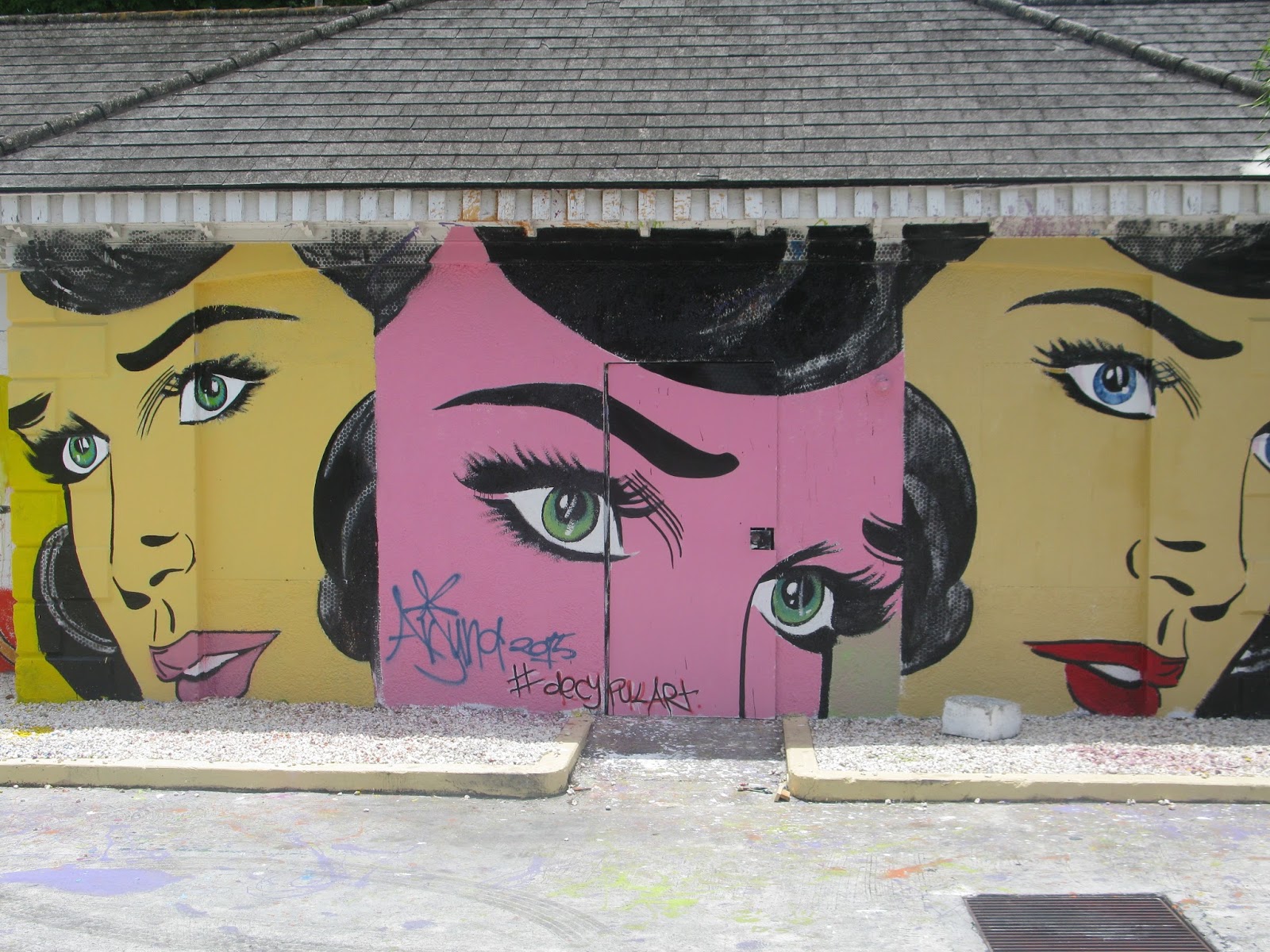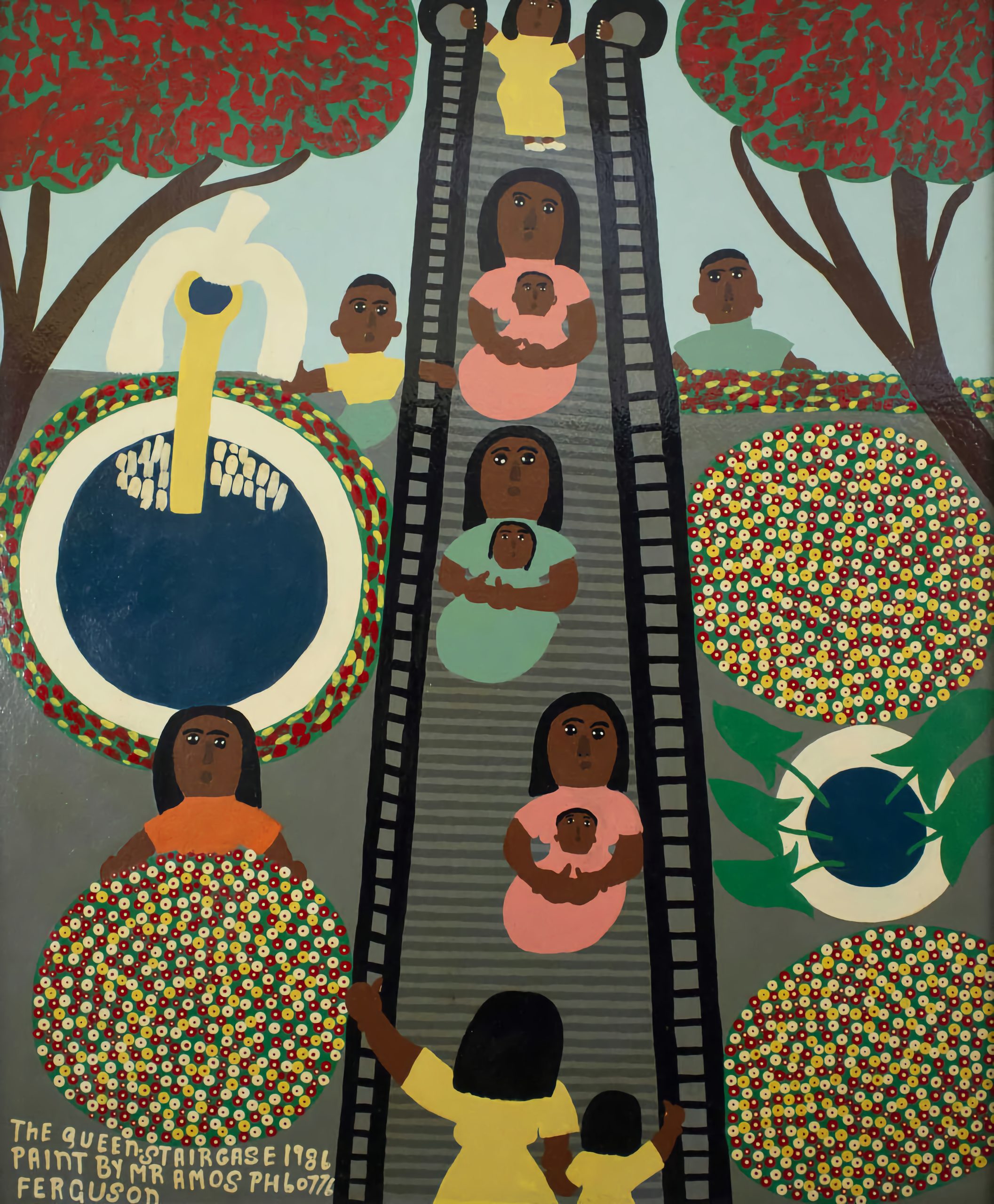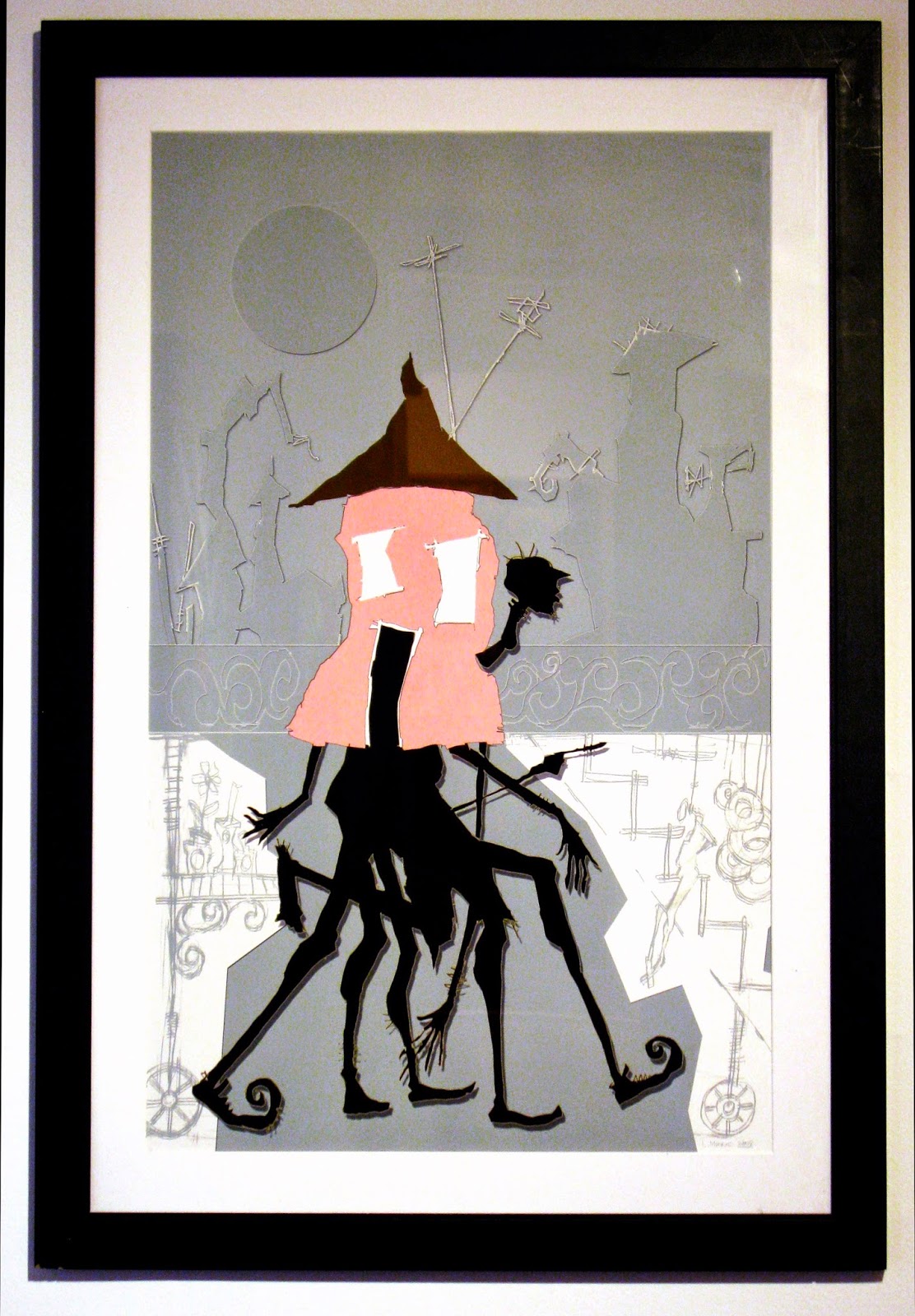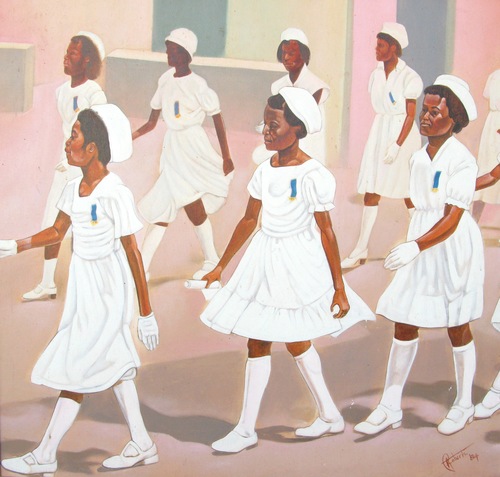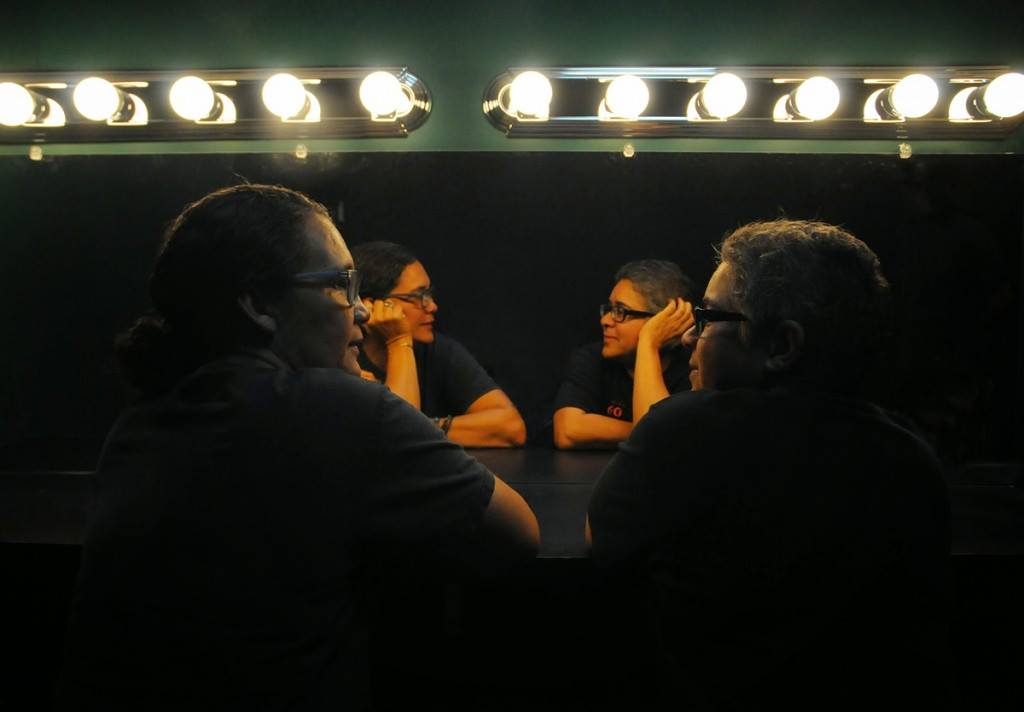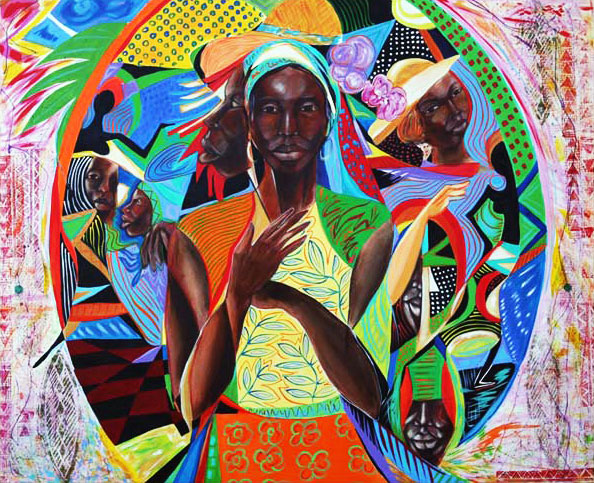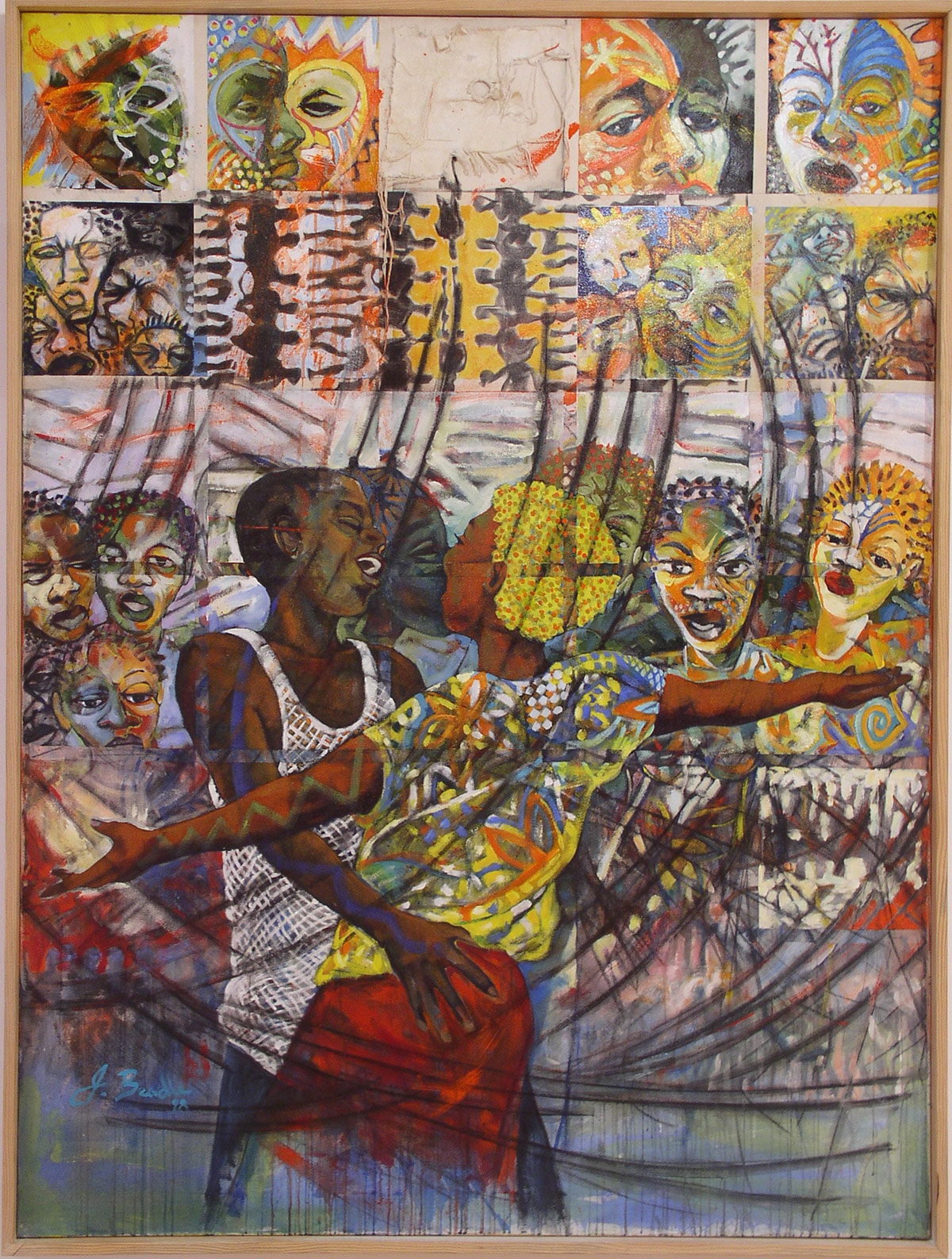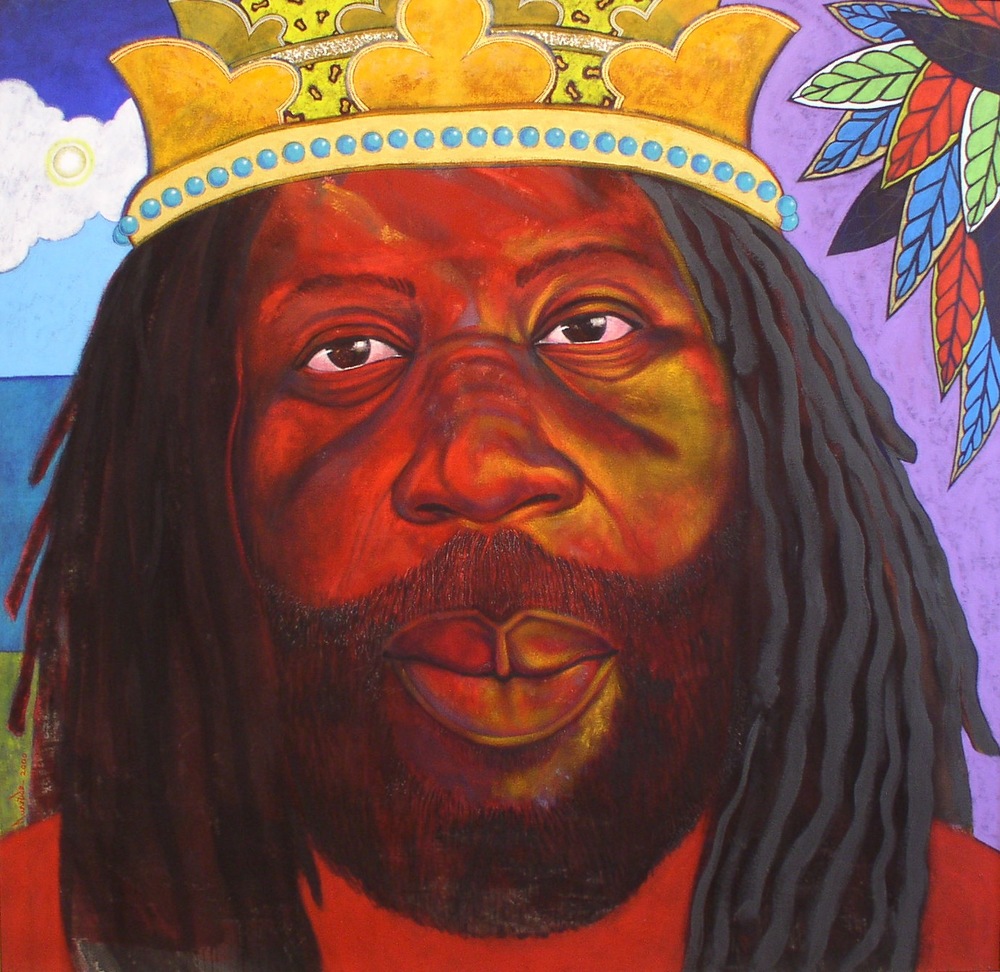This month, the National Art Gallery of The Bahamas (NAGB) had the pleasure of a visit by renowned Bahamian artist Max Taylor. Called one of the country’s foremost ‘master artists’, multimedia artist Taylor has been an invaluable member of the country’s visual arts community for decades. During that time, he has produced exquisite prints, paintings and ceramic works, many of which are on display at the NAGB and for sale in its Mixed Media gift shop.
Currently browsing: Stories
The writing on the wall
One of the much-talked about highlights of the National Art Gallery of The Bahamas (NAGB) Mixed Media Art Summer Camp has been the new mural – or, rather, murals – adorning the public wall spaces at the NAGB. As living, collaborative works, the murals have been completed by groups of campers and individual artists, all of whom joined the NAGB for some time during its summer camp, led by Education and Curatorial Support Associate Abby Smith.
Amos Ferguson’s ‘The Queen Staircase’
“The Queen Staircase” is easily one of Bahamian Domestic’s most recognizable works.
Lavar Munroe’s ‘Migrant’
In seeing so many large, bright, and significant works in Bahamian Domestic, it might seem peculiar to pick a piece that appears so much smaller and more subtle in comparison. However, it’s equally essential to find the importance in the things that become marginalized by bigger entities – the significance in the small. For Natalie Willis, National Art Gallery Curatorial Trainee, Lavar Munroe’s “Migrant” seemed appropriate to discuss and share as April’s Art Work of the Month.
Art’s healing properties
Re-membering the past: Margot Bethel and Nicolette Bethel take on Transforming Spaces 2015 family-style
Teaming up to transform part of the grounds at the National Art Gallery of The Bahamas (NAGB) this year are cousins College of The Bahamas Assistant Professor of Sociology Nicolette Bethel and artist and designer Margot Bethel, who will be assembling a representation of a former family home. The artwork was originally planned as a piece for the Seventh National Exhibition, Antillean: an Ecology, but the project had to be delayed due to conflicting schedules.
How To: The Proper Conservation and Preservation of Paintings
Feature from the National Collection: Emancipation Day Boat Cruise
The sight of colorful faces, the rock of the music, and the sway of the boat with a boisterous, energetic crowd are all felt in John Beadle’s Emancipation Day Boat Cruise. Viewing this piece is an experience in and of itself. The analogous colors of reds, oranges and yellows are aptly applied across the canvas. The painting also includes elements of drawing, collage and quilting.
Feature from the Collection: Burnside Crowns a King
If a visitor at the National Art Gallery of The Bahamas were to wander into the office, found on the second floor, and make a left turn, one of the first things they would see is a “larger than life” painting of a man gazing back at them with a contemplative yet peaceful expression on his face. That would be Stan Burnside’s feature piece, “Solomon” (2000).
